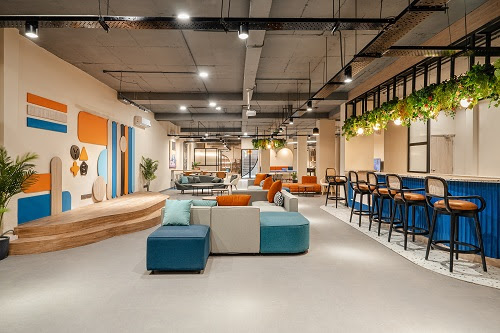E - PAPER
Responsible Architecture
Sanjay Prakash, Principal – ShiFt Architects, New Delhi is an architect with a commitment to energy-conscious architecture, eco-friendly design and people’s participation in planning. In an interview with Realty Plus he spoke about the challenges and scope that the architects need to be prepared for
 BY
Realty Plus
BY
Realty Plus
Published - Thursday, 03 May, 2018

Sanjay Prakash, Principal – ShiFt Architects, New Delhi is an architect with a commitment to energy-conscious architecture, eco-friendly design and people’s participation in planning. In an interview with Realty Plus he spoke about the challenges and scope that the architects need to be prepared for in today’s scenario
Sanjay after completing his B Arch got a chance to work as a research assistant in IIT Delhi, in the Centre for Energy Studies, and developed an early interest in sustainability in all its aspects. This led to commissions in which he sought out his energy and pursued the work in same domain.
Talking about the changing dynamics in real estate and the increased the expectations from the architects, Prakash opined that the role and relevance for architects has increased significantly, but they need to maintain a balance between art & technology, he said, “ I see that in one sense architects have got too involved with the poetic aspects of their profession, which, though important, tends to overshadow the mastery of technology and construction that used to be the hallmark of great architects in the past, and they need to regain that space in order to be considered a leading profession in society again.”
Way forward for passive and low energy architecture:
His area of practice and research over the last 34 years includes passive and low energy architecture and planning, hybrid air-conditioning, autonomous energy and water systems, bamboo, wood and earth construction, community-based design of common property, and computer-aided design. Under his guidance, hundreds of persons have developed capabilities in performing design, conceptual or management work in these areas.
Prakash feels that here is a tendency among young architects practicing sustainability (and students) to apply formulaic solutions to conventionally designed buildings. Doing this can get third-party green certificates, and do, but will leave out many aspects that are holistically to be considered for true sustainability: aspects such as sufficiency (questioning consumption: how much is enough?), resilience (can it withstand future schock? climate shocks, economic shocks?), equity (is anyone left out?), and identity (is this ours? does it belong?).
Further adding about the client perspective on passive architecture, Prakash, explained, “No good outcome can come if client, architect and user operate in silos. They all need to collaborate and participate. Clients logically want to implement these strategies if they work effectively whether it is the end-users who want buildings for themselves or developers who are developing a project and selling it.”
Over the years, the prolific architect Sanjay Prakash has integrated all his work with the practice of new urbanism and sustainability in his professional and personal life. His name and work is mentioned in the twentieth edition of one of the main reference works in architectural history, A History of Architecture by Sir Bannister Fletcher.
Future of Architectural practice in India
Prakash states that technology is only a means; architects need to be masters of technology and high-performance materials, not its slaves. “ At times we have seen architects become slave to the technology, this happens if they are under-informed and beset by sales representatives from different manufacturers, “he said. Predicting a shake down in architectural practices in future, Prakash, said, “The increasing number of architects will have to build themselves (something currently discouraged legally). But architectural practices shall continue to follow what clients require and demand, as they do today.”
In his media interview once, Praksh had said that the globalisation, changing job profiles, migration, need for affordable housing, artificial intelligence and the advent of new materials and technologies for construction, all of these have set new expectations from architectural practices. In his concluding remarks, Prakash, reaffirmed “Just keep an ear to the ground; the rest will follow. Society and its values will govern what architects and urban planners will do, not the other way around, and they will learn to do it instantly if the citizen demands it.”
RELATED STORY VIEW MORE
NEWS LETTER
Subscribe for our news letter
E - PAPER
-

CURRENT MONTH 
LAST MONTH














